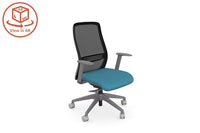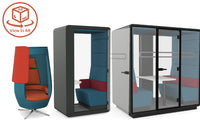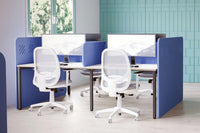The Power of Color and images in Educational Environments
Incorporating images and colour into educational facilities isn't just about aesthetics; it's a strategic move that can significantly impact both students and staff. Images do more than fill spaces with vibrancy—they are pivotal in creating environments conducive to learning and productivity.

For Students School Furniture:
-
Stimulates Learning: Colors are known to stimulate the brain, enhancing cognitive processes and improving the retention of information. Bright hues, in particular, can energize students and spark creativity and imagination.
-
Influences Mood: Psychological research suggests that certain colors can influence mood. For instance, blues and greens are typically associated with calmness and can help reduce anxiety, which is essential in high-pressure academic settings.
-
Defines Areas: Different colors can help demarcate specific zones for various activities. For instance, warm colors can denote areas for active learning, while cooler tones might indicate a place for quiet study or relaxation.
-
Aids Memory: Visual cues help in memory retention. Color-coded materials and walls can assist students in categorizing and recalling information more efficiently.

School Eductaion Furnture For Staff:
-
Boosts Morale and Productivity: Staff rooms with thoughtful color schemes can make the environment more inviting, boosting morale and productivity. Teachers and administrative staff likely feel more energized in an environment that is visually stimulating.
-
Promotes Well-being: Colors that evoke a sense of tranquility can contribute to lowering stress levels among educators, who are often managing a high workload. A more relaxed state of mind is crucial for staff well-being and effectiveness.
-
Encourages Creativity: Just as with students, colors can play a significant role in fostering creativity among staff. This is particularly beneficial for educators who are continually developing new and engaging ways to present information.

Education Furnture for the Facility as a Whole:
-
Reflects School Identity: Using colors that align with the school's logo and branding can reinforce school spirit and a sense of community.
-
Enhances Engagement: Engaging color schemes can make the learning environment more appealing, encouraging students and staff to look forward to being in the educational space.
-
Facilitates Navigation: Strategically used colors can serve as intuitive guides for both visitors and regulars, aiding in navigation throughout the complex.
-
Adaptable Environments: As educational needs shift, so too can color schemes. Flexible color designs allow for areas to be repurposed with ease, adapting to the ever-evolving educational landscape.


In conclusion, the thoughtful application of color within educational facilities is far from superficial. It's a foundational element that can enrich the educational experience, enhance well-being, and establish a positive, dynamic environment for all occupants. As we design and refurbish learning spaces, an emphasis on color and its psychological and functional benefits should be at the forefront of our planning.









0 comments